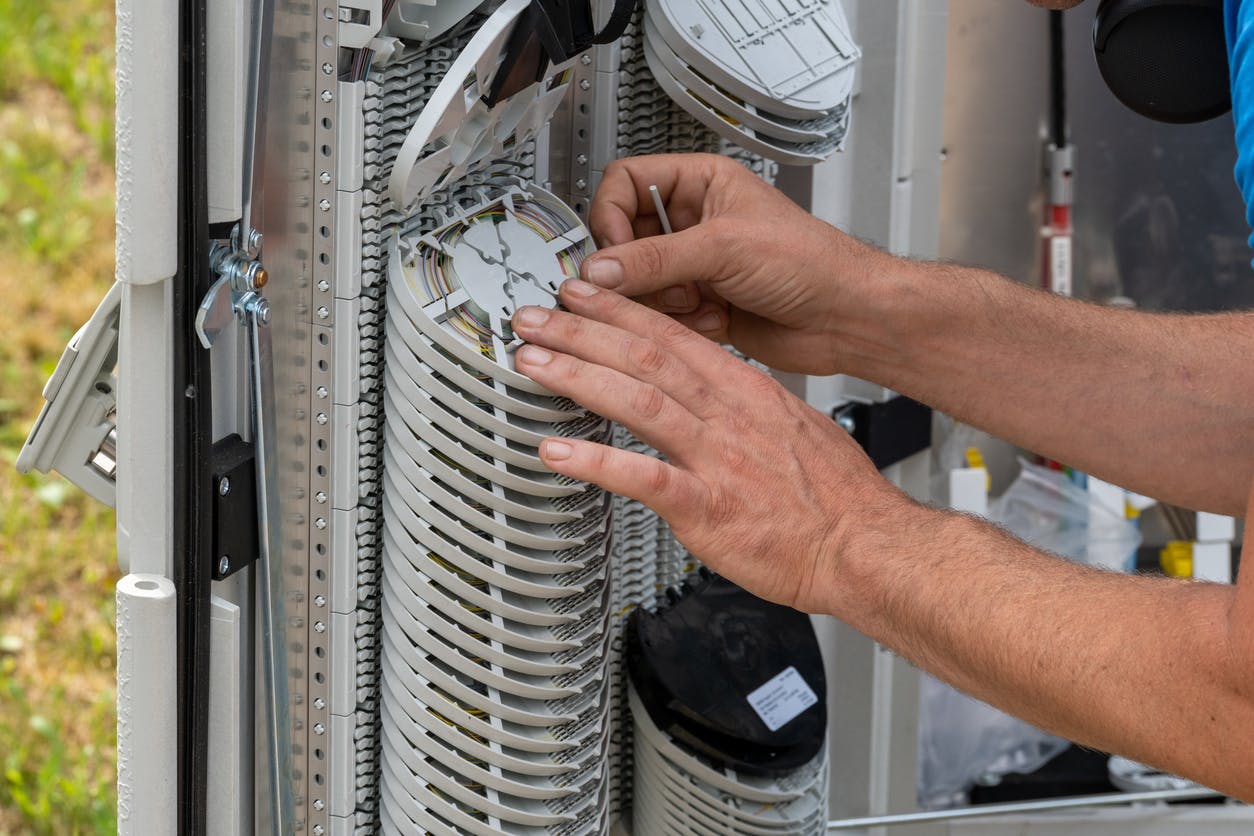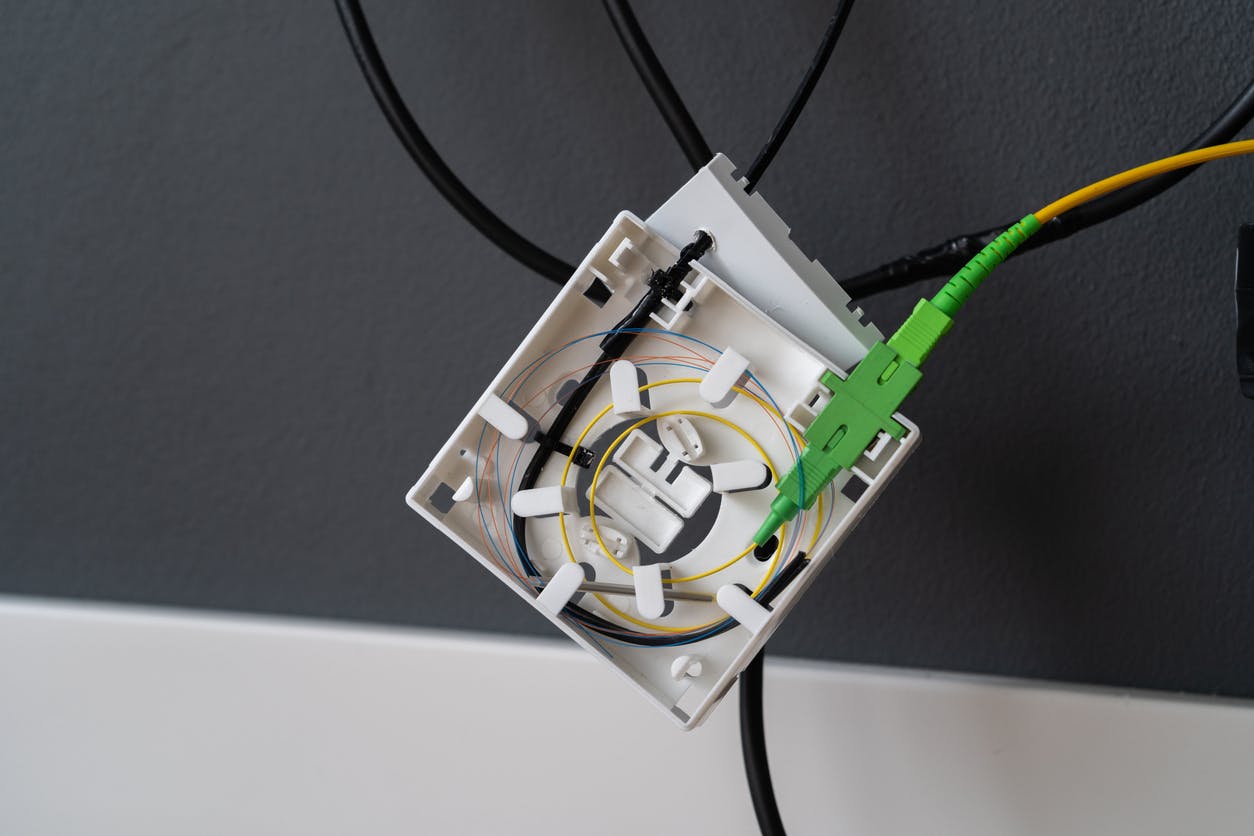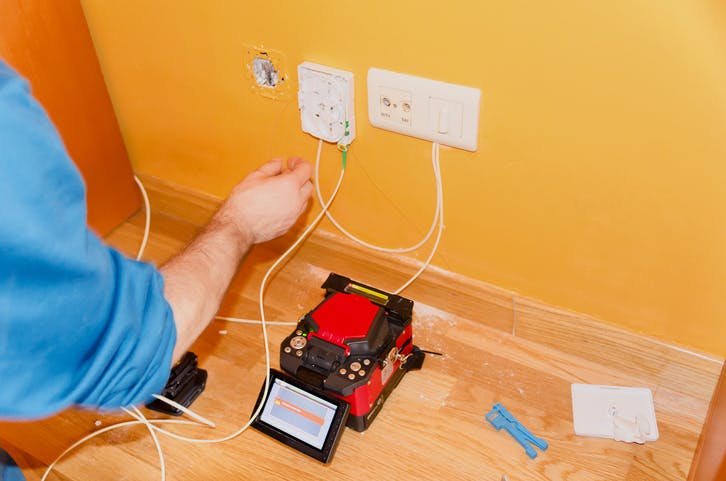In today’s rapidly evolving digital landscape, a reliable and efficient fiber connection is fundamental to providing seamless internet services. The stakes are high when it comes to activating fiber connections, as poorly executed installations can lead to costly revisits, dissatisfied customers, and lost revenue. While technician efficiency is crucial, back-office quality compliance teams and field operations managers also need streamlined workflows and reliable field data to elevate their operations. In this context, artificial intelligence (AI), specifically computer vision, has become increasingly pivotal for telecom operators and contractors aiming to enhance the efficiency of fiber service activation operations.
Let’s explore how computer vision is transforming the fiber service activation process, list the tangible benefits it brings to the industry, and deep dive into concrete use cases.

Understanding Fiber Connection Operations
Let’s understand what the typical fiber technician’s workflow is to connect a subscriber, bearing in mind that some steps vary based on infrastructure type, such as Full Fiber or Hybrid Fiber Coaxial (HFC).
- Initial Assessment: The technician reviews the work order through their field service management (FSM) app, checking the customer’s address, connection type (new installation or customer switch), and network infrastructure.
- Fiber Cabinet Connection: If required, the technician connects the customer’s fiber to the appropriate port in the fiber cabinet and verifies the signal continuity.
- Fiber Installation: The technician extends the fiber from the distribution point to the customer’s premises, which may involve underground ducts, overhead poles, or building facades.
- Termination Point Setup: Inside the premises, the technician installs the termination point, splices the fiber, and connects it to the router or fiber modem (ONT).
- Final Testing: After configuration, the technician tests the connection’s stability and speed, ensuring optimal performance.
- Documentation and Reporting: The technician performs a final system check, captures photos for documentation, and updates the work order on the digital platform. Once the customer confirms the service is operational, the technician submits a report and closes the job.


Common Challenges in Fiber Connection Operations
Deploying and activating fiber connections involves several steps, each requiring precision, and presenting challenges for technicians:
- Installation Complexity: Technicians navigate intricate configurations and determine optimal routing for fiber cables, with even more challenges arising for less experienced technicians.
- Equipment Issues: Without proper quality standards setting the baseline on how tasks should be performed, equipment degrades, which can complicate the job of fiber technicians over time. In mutualized networks, where several companies operate the same equipment, this problem can exacerbate. Typical defects include hasty and messy cable coiling, which can prevent fiber signals from running correctly.
- Saturated equipment: Another issue that technicians can encounter is the impossibility to work on a saturated distribution point. Infrastructure operators do not always have an up-to-date asset inventory level system that enables them to know which assets are saturated. The consequence is that technicians of ISPs or contractors are sent on the field but cannot do their work, resulting in unsuccessful operations.
- Connectivity Problems: Technicians working in remote areas often face connectivity issues, especially when accessing equipment located in basements or other hard-to-reach places.
- Time Constraints: Technicians must complete multiple subscriber connection operations in a day, without compromising quality or customer satisfaction.
On the back-office side, operations supervisors & quality compliance managers must stay connected to the work that is done in the field. This presents 2 challenges:
Monitoring the performance of field teams during fiber connection operations:
- Are technicians properly documenting their work?
- Which tasks during fiber service activation are not executed correctly?
- Which contractors fail to meet the quality standards set by infrastructure operators or internet service providers?
Ensuring accurate contractor billing:
- Operators are billed by contractors based on the nature of the operation (customer switch, new fiber installation). To ensure fair and accurate payments, operators must obtain reliable, verifiable proof of the work completed.

How AI Transforms Fiber Connection Operations
AI-powered solutions are revolutionizing the fiber connection process by offering innovative solutions to address these challenges.
Streamlining Documentation
AI can automate the validation of photo reports provided by technicians during fiber connection operations. With Optical Character Recognition (OCR), AI can extract metadata from images, such as cable and asset labels, and automatically populate the survey or FSM report, saving time for the technician.
Automating Quality Assurance
AI can analyze images and data within seconds to verify that every aspect of the fiber connection meets predefined quality standards. Technicians receive real-time feedback, enabling them to make on-site adjustments and resolve issues before leaving. This minimizes human error and ensures consistent, high-quality installations. The rapid AI analysis prevents workflow disruptions, allowing technicians to complete tasks efficiently without unnecessary delays.
Generating unprecedented data to help operators pilot their field teams or contractors
Through this real-time quality control process, contractors' fieldwork is instantly validated and approved by AI, serving as a trusted third party. Operators are invoiced according to the nature of the work that was done by contractors to avoid an unfair billing process. They can process contractor payments seamlessly, improving cash flow management. With increased working capital, contractors can expand their workforce, take on additional projects, and accelerate subscriber connections.
By analysing each fiber connection operation with AI, telecom players can aggregate high-level data about the quality of the work that is done. This 360-visibility enables field ops managers and quality compliance teams to be better informed about the reality of the work that is done in the field and identify the weak spots. They can therefore take proactive measures to improve operational efficiency, like training programs, and attributing higher market shares to contractors that perform best in terms of quality compliance.

Benefits of AI-Powered Fiber Connection Operations for Telecom Operators
Integrating AI-powered tools into fiber connection processes offers numerous benefits:
- Enhanced Quality: AI ensures every connection meets the highest quality standards.
- Reduced Costs: Automation of the QC and asset inventory processus reduces the need for revisits, lowering compliance and operational costs.
- Improved Efficiency and Accelerated Service Revenues: Streamlined workflows lead to faster deployments and activations.
- Increased Customer Satisfaction: Achieving first-time, flawless connections fosters customer loyalty and reduces churn.

Real-World Use Cases of AI in Fiber Service Activation
Computer vision technology is already transforming fiber connection operations for service providers and their contractors. Here are a few examples of how AI is improving various aspects of fiber service activation:
- Fiber Cabinet Validation: AI ensures that the fiber cabinet is left clean, that no jumper cables are disconnected after the job is completed, that all cables are correctly positioned to allow proper fiber signal transmission, and that the subscriber connection cable label matches the one recorded in the operator’s Information System.
- Distribution Point Validation: AI checks fiber coiling, the number of splicing protections, and verifies that the colors of the cables match the optical path that is configured in the Information System.
- Termination Point Validation: AI validates the labeling and power meter attenuation to ensure correct installation.


Why Choose Deepomatic for Your Fiber Connection Operations?
Deepomatic's computer vision platform is designed to accelerate and streamline fiber service activation. Here’s why Deepomatic is the preferred partner:
- Proven Expertise: Our deep learning models are fine-tuned for fiber optic applications, ensuring unparalleled AI performance that is specifically tailored to the telecom industry. Bouygues Telecom in France has been using our solution in its daily fiber connection operations for 7 years, and SFR (Altice Group) submits about 5 million photos of fiber connection operations to Deepomatic every month.
- Ready-to-Deploy Models: Thanks to this extensive experience working with leading telecom players in their fiber connection operations, Deepomatic offers off-the-shelf models that accelerate AI deployment, enabling faster value generation for our clients.
- The Partner of All your Fiber Operations : Beyond fiber connection operations, Deepomatic accompanies operators throughout the entire network lifecycle, from network construction, service activation, to maintenance.

AI-powered computer vision is transforming fiber connection operations by enhancing efficiency, accuracy, and quality compliance. By automating documentation, streamlining quality assurance, and providing real-time insights, AI helps telecom operators and contractors optimize field operations, reduce costs, and improve customer satisfaction. As the demand for seamless fiber connectivity grows, leveraging AI-driven solutions like Deepomatic’s platform ensures a smarter, more reliable approach to fiber service activation.
Discover how Deepomatic’s AI-powered computer vision platform supports telecom players in fiber connection operations.




